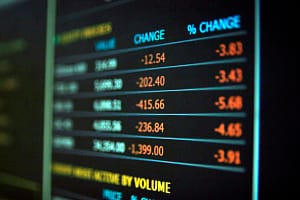The U.S. stock market saw a strong performance last week, with the Dow Jones Industrial Average and S&P 500 Index moving closer to record highs.
Investors responded positively to Federal Reserve Chair Jerome Powell’s signal that interest rate cuts are on the horizon.
Powell’s remarks at the Jackson Hole Economic Symposium indicated that the Federal Reserve is ready to adjust its policy, likely lowering rates at the upcoming September meeting.
This optimism led to broad-based gains, particularly in small-cap stocks, which outperformed their larger counterparts. The S&P 500’s equal-weighted index also outpaced the traditional capitalization-weighted index, highlighting the broad participation in the market rally.
The week’s trading volumes were notably low, a typical trend during the late summer months, but the anticipation of rate cuts kept investor sentiment buoyant.
The release of the Federal Reserve’s meeting minutes earlier in the week supported this sentiment, with the majority of policymakers favoring a rate cut in September. Some even saw a case for reducing rates as early as July, reflecting confidence in disinflation trends and a more balanced labor market.
However, the market’s enthusiasm was tempered later in the week by comments from Kansas City Fed President Jeffrey Schmid, who cautioned that the labor market remains strong, suggesting that the Fed might still be cautious in its approach to rate cuts. Economic data released during the week, including a slight uptick in existing home sales and a continued slump in manufacturing, did little to sway market sentiment.
In the bond market, longer-term yields fell following a significant downward revision in job growth estimates by the Labor Department, which showed 818,000 fewer jobs added over the past year than previously reported. This revision, the largest since 2009, contributed to a rally in Treasury bonds. Municipal bond yields also declined, despite active primary market activity, while investment-grade corporate bonds performed in line with broader market trends.
European markets also ended the week on a positive note, with the pan-European STOXX Europe 600 Index rising 1.31%. Investors were encouraged by the prospect of interest rate cuts not only from the U.S. Federal Reserve but also from the European Central Bank (ECB). Key European indexes, including Germany’s DAX and France’s CAC 40, posted solid gains, while the UK’s FTSE 100 saw more modest growth.
Economic data from the Eurozone provided mixed signals. The region’s business activity picked up in August, driven largely by the services sector, which was buoyed by preparations for the upcoming Paris Olympics. However, the manufacturing sector continued its prolonged contraction, marking its 17th consecutive month of decline.
Wage growth in the Eurozone also slowed in the second quarter, which could ease some of the inflationary pressures that the ECB has been monitoring closely. Several ECB policymakers, including Bank of Finland Governor Olli Rehn and Bank of Italy Governor Fabio Panetta, expressed support for a rate cut in September, with some suggesting that further cuts could follow.
These views were echoed by Latvia’s central bank governor, who indicated that the ECB has room to reduce rates twice more this year. Meanwhile, Sweden’s Riksbank took action by lowering its key policy rate to 3.5%, signaling additional cuts in the near future.
In the UK, business activity continued to expand, with the Purchasing Managers’ Index (PMI) indicating the fastest growth since April. This was driven by stronger new orders in the private sector, suggesting that the UK economy remains resilient despite broader concerns about global growth.
In Asia, Japan’s stock markets made modest gains, with the Nikkei 225 Index rising 0.8% and the broader TOPIX Index up 0.2%. Despite some market volatility, largely driven by concerns over U.S. growth, the Bank of Japan (BoJ) maintained its commitment to normalizing monetary policy. BoJ Governor Kazuo Ueda reiterated that the central bank would continue its cautious approach to interest rate hikes as long as the economic outlook supports it. The yen strengthened slightly against the U.S. dollar, reflecting these diverging monetary policy expectations between Japan and the U.S.
Economic data from Japan supported the BoJ’s hawkish stance, with core consumer price inflation accelerating for the third consecutive month in July. While broader economic indicators such as GDP growth and consumer spending remained healthy, the BoJ emphasized the importance of monitoring the yen’s movements closely, as sharp fluctuations could impact inflation forecasts and the overall economic outlook.
In China, stock markets experienced declines, with both the Shanghai Composite and CSI 300 Indexes posting losses for the week. Investors were cautious ahead of Fed Chair Powell’s speech, and a light economic calendar provided little incentive to buy. The People’s Bank of China (PBOC) kept its benchmark lending rates unchanged, signaling a cautious approach to monetary easing despite ongoing economic challenges. Analysts expect the PBOC to consider further rate cuts later this year, particularly if the U.S. moves forward with its own rate reductions.
In summary, U.S. and European markets rose on optimism about upcoming interest rate cuts from central banks, with U.S. stocks nearing record highs and European business activity improving, particularly in the services sector. In contrast, Japan maintained its cautious monetary policy stance while China’s markets declined amid economic concerns and cautious investor sentiment.





Leave a Comment